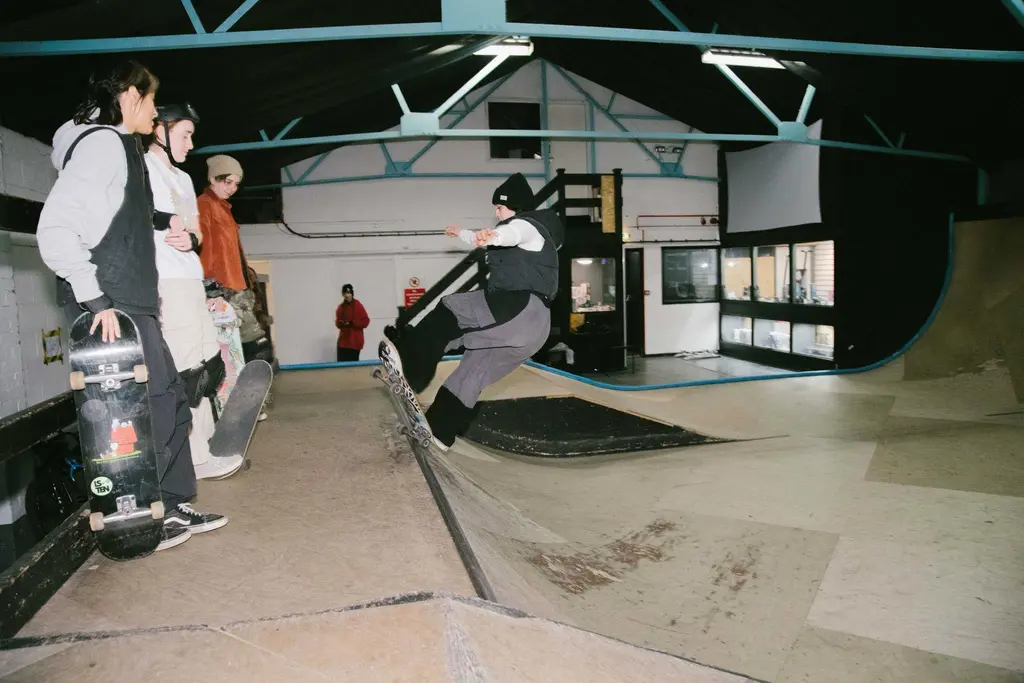Documenting the decline of the West Midlands in the 70s
- Text by Miss Rosen
- Photography by Janine Wiedel

In 1977, Janine Wiedel became the first photographer to win the West Midlands Arts Bursary. She set off in an old VW campervan that doubled as mobile home and darkroom, and embarked on a journey into the heart of the five fabled counties that mark the birthplace of the Industrial Revolution.
“Birmingham was always referred to as ‘the city of 1,000 trades’. As I wandered in the area I could still see and feel remnants of this history. But the writing was on the wall,” says Wiedel.
After decades of underinvestment, industries were unable to compete against the advancement of technology. Mass production decimated small factories, tearing apart the fabric of local communities. The area that had once been known as “workshop of the world” was beginning to disappear and with it, the fabric of the community itself.


“Even before the ravages of Thatcherism, coal and steel industries were battling for their future, with national protests and strike action,” Wiedel says. “However, there were still many of the smaller firms working in traditional ways, producing, and distributing their products around the world. Amidst the Victorian rubble and housing re-generation, the small industries in areas such as Aston were still working around the clock.”
Over the course of the next three years, Wiedel chronicled the labour force in local industries across the West Midlands with reverence, warmth, and respect collected in the new book, Vulcan’s Forge (Bluecoat). Organised by industry, the book chronicles the raw physical grit of those who work in iron, steel, coal, or at the forge, in the potteries, and jewellery quarter, preserving the final vestiges of England’s storied past.
Wiedel was welcomed everywhere she went. “Most of the time, I would literally knock on the factory door be invited in and shown around. After an initial visit I was usually given as much time as I needed to return with my camera,” she says.

Favouring an immersive approach, Wiedel spent time with workers before photographing them, creating a space for mutual admiration and shared curiosity that resonates in the work. She readily donned a hardhat, goggles, and stuffed cotton wool in her ears whilsr stepping inside the mills of steel and iron. “It was a world filled with steel filings, whistles, sirens. There were lots of chances of disappearing into rivers of molten steel,” she remembers.
The coal mines presented challenges all their own, as Wiedel learned firsthand that women were considered bad luck on the premises. They finally agreed, handed her a hard hat, and left her to fend for herself through the perilous descent through pitch black tunnels illuminated only by her headlamp. “To take the photos I left the shutter open for three minutes and removed the headlamp from my helmet and literally painted everything with the narrow beam,” she says.
“At the time, health and safety regulations hardly existed which for me was wonderful as it allowed me to photograph freely,” Wiedel continues. “My aim was to document these industries and those who worked in them before they disappeared, and their history was lost. By photographing them I was hoping that one day they would at least not be forgotten.”
Enjoyed this article? Follow Huck on Instagram.
Support stories like this by becoming a member of Club Huck.
Latest on Huck

Clubbing is good for your health, according to neuroscientists
We Become One — A new documentary explores the positive effects that dance music and shared musical experiences can have on the human brain.
Written by: Zahra Onsori

In England’s rural north, skateboarding is femme
Zine scene — A new project from visual artist Juliet Klottrup, ‘Skate Like a Lass’, spotlights the FLINTA+ collectives who are redefining what it means to be a skater.
Written by: Zahra Onsori

Donald Trump says that “everything is computer” – does he have a point?
Huck’s March dispatch — As AI creeps increasingly into our daily lives and our attention spans are lost to social media content, newsletter columnist Emma Garland unpicks the US President’s eyebrow-raising turn of phrase at a White House car show.
Written by: Emma Garland

How the ’70s radicalised the landscape of photography
The ’70s Lens — Half a century ago, visionary photographers including Nan Goldin, Joel Meyerowitz and Larry Sultan pushed the envelope of what was possible in image-making, blurring the boundaries between high and low art. A new exhibition revisits the era.
Written by: Miss Rosen

The inner-city riding club serving Newcastle’s youth
Stepney Western — Harry Lawson’s new experimental documentary sets up a Western film in the English North East, by focusing on a stables that also functions as a charity for disadvantaged young people.
Written by: Isaac Muk

The British intimacy of ‘the afters’
Not Going Home — In 1998, photographer Mischa Haller travelled to nightclubs just as their doors were shutting and dancers streamed out onto the streets, capturing the country’s partying youth in the early morning haze.
Written by: Ella Glossop





